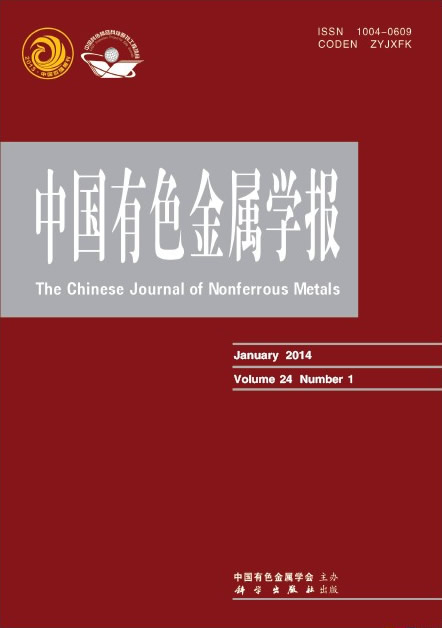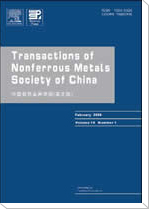放电容量与显微结构
(钢铁研究总院 功能材料所,北京 100081)
摘 要: 快淬工艺能明显地提高Ti0.8Zr0.2Mn0.5V0.5Ni1.0贮氢合金的放电容量,而且淬速与放电容量之间在一定情况下出现峰值。XRD、SEM、TEM分析结果表明:快淬合金由细小的枝晶组成,随着淬速增加,晶粒更加细小;快淬合金很难形成非晶,当淬速达到32m/s时仅有少量非晶出现,主体仍是微晶和纳米晶;Ti0.8Zr0.2Mn0.5V0.5Ni1.0合金是多相结构,低淬速快淬态合金和铸态合金由大量的六方C14 Laves相和少量的TiNi非Laves相组成,当淬速达到8m/s时,合金中开始出现立方C15 Laves相。快淬合金中能大量吸氢的C14、C15相的总含量更多,从而使快淬钛基合金的放电容量有较大的提高。合金中各个相的相对含量随着淬速的改变而改变,使C14、C15相的总含量与淬速之间并不是简单的线性关系。
关键字: 贮氢合金; 放电容量; 快淬; 显微结构
(The Functional Material Institute, Central Iron & Steel Research Institute, Beijing 100081, China)
Abstract:The discharge capacity of Ti0.8Zr0.2Mn0.5V0.5Ni1.0 alloy was greatly improved by rapid-quenching, and its peak value can be achieved at certain rapid rate. The microstructure of as-quenching alloy was observed by XRD, SEM and TEM. The results show that: 1) the dendritic crystal will be finer with increasing rapid rate; 2) small quantity of amorphous appears only at the quench rate of 32m/s, the main of alloy still consists of microcrystallite and nanocrystal; 3) both of as-cast alloy and low rate as-quenching alloy are polyphase structure(larger quantity of C14, a little of TiNi), and C15 phase appears under the rate above 8m/s, and more content of C14+C15 phases greatly improves the discharge capacity. With the quenching rate changing, the relative content of each phase is changed, so the relationship between the content of C14+C15 and the rapid quenching rate is not simply lineal.
Key words: hydrogen-storage alloys; discharge capacity; rapid-quenching; microstructure


